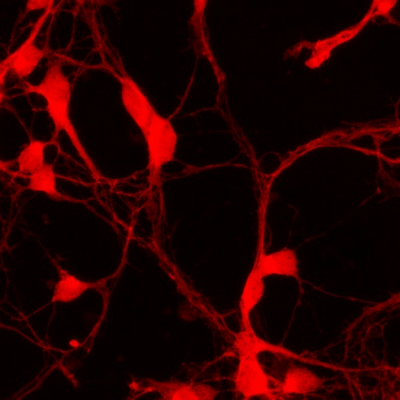Dec 11 2012
A nanomaterial engineered by researchers at Duke can help regulate chloride levels in nerve cells that contribute to chronic pain, epilepsy, and traumatic brain injury.

The findings, published online Dec. 10, 2012, in the journal Small, were demonstrated in individual nerve cells as well as in the brains of mice and rats, and may have future applications in intracranial or spinal devices to help treat neural injuries.
Carbon nanotubes are a nanomaterial with unique features, including mechanical strength and electrical conductivity. These characteristics, along with their tiny size, make them appealing to researchers in technology and medicine alike.
In a world of shrinking computers and smartphones, carbon nanotubes have been tapped as a solution for improving microchips. They outpace silicon microchips in size and performance, meeting a demand for smaller, faster devices. For people with nerve injury and certain neurological disorders, devices coated with or entirely made of carbon nanotubes could offer a new avenue for improving treatment options.
"Carbon nanotubes hold great promise for an array of applications, and we are only beginning to see their enormous potential," said lead author Wolfgang Liedtke, M.D., PhD, associate professor of medicine and neurobiology at Duke. "Their exceptional mechanical and electrical properties make them ideal for developing devices that interface with nervous tissues. However, the precise mechanisms behind carbon nanotubes and their effect on neurons remain elusive."
Not all carbon nanotubes are the same. Jie Liu, PhD, George Barth Geller Professor of Chemistry at Duke University and senior author of the study, developed specific carbon nanotubes that are extraordinarily pure. Termed few-walled carbon nanotubes, they have superior properties to their commercially-available counterparts.
Duke researchers initially set out to gauge if carbon nanotubes had toxic or adverse effects on living tissue. Studying neurons cultured from rodents, representing a "cerebral cortex in a dish," they found the opposite. Exposing the cells to carbon nanotubes appeared to have a nourishing effect on the neurons, making them bigger and stronger.
"Previous studies have looked at the behavior of carbon nanotubes on neurons. However, the impurity in the nanotubes significantly affected the results. After we developed pure few-walled carbon nanotubes in our lab, we discovered that nanotubes actually accelerated the growth of the neuronal cells significantly," said Liu.
Neural circuits can be corrupted by elevated chloride within neurons. A number of diseases involve such neural circuit damage, including chronic pain, epilepsy, and traumatic brain injury.
Low levels of chloride within neurons are maintained by a chloride transporter protein called KCC2, which functions by churning chloride ions out of the cell. In mature neurons, there is no back-up for this function.
The immature neurons cultured in Liedtke's laboratory had high levels of chloride, but as the cells matured, their chloride levels dropped as KCC2 increased. When the neurons were exposed to carbon nanotubes, the cells matured much faster, and the chloride levels dropped more quickly. Researchers learned that younger cells exposed to carbon nanotubes produced more KCC2 protein.
"Carbon nanotubes enhanced the regulation of chloride in neurons to normal levels. These changes are of enormous significance to the cell," Liedtke said.
The increase in KCC2 protein was also connected to a rise in calcium in the neurons. The increased calcium levels activated a protein found in the brain called CaMKII which signals a neuron to make more KCC2.
Similar results were observed in mice brains, as the carbon nanotubes prompted an increase in activity of the KCC2 gene, suggesting that the few-walled carbon nanotubes influence gene regulation of KCC2.
These findings may lead to the development of a new generation of neural engineering devices using carbon nanotubes. Existing devices that modulate the function of nerve cells use electrical systems that date back several decades.
"We hope that carbon nanotubes will work as well in injured nerves as they did in our study of developing neurons," Liedtke continued. "The use of carbon nanotubes is just in its infancy, and we are excited to be part of a developing field with so much potential."
In addition to Liedtke and Liu, study authors include Michele Yeo, Yiding Wang, and Ken Berglund in the Department of Medicine, Division of Neurology; Hongbo Zhang in the Department of Chemistry; Michelle Gignac in the Department of Mechanical Engineering; and Sara Miller in the Department of Pathology.
The research received funding from Duke University, the Klingenstein Fund, the National Institutes of Health (R21NS066307), and the Center for the Environmental Implications of NanoTechnology (CEINT).
Liedtke and Liu have filed a preliminary patent application for the few-walled carbon nanotubes used in this research.